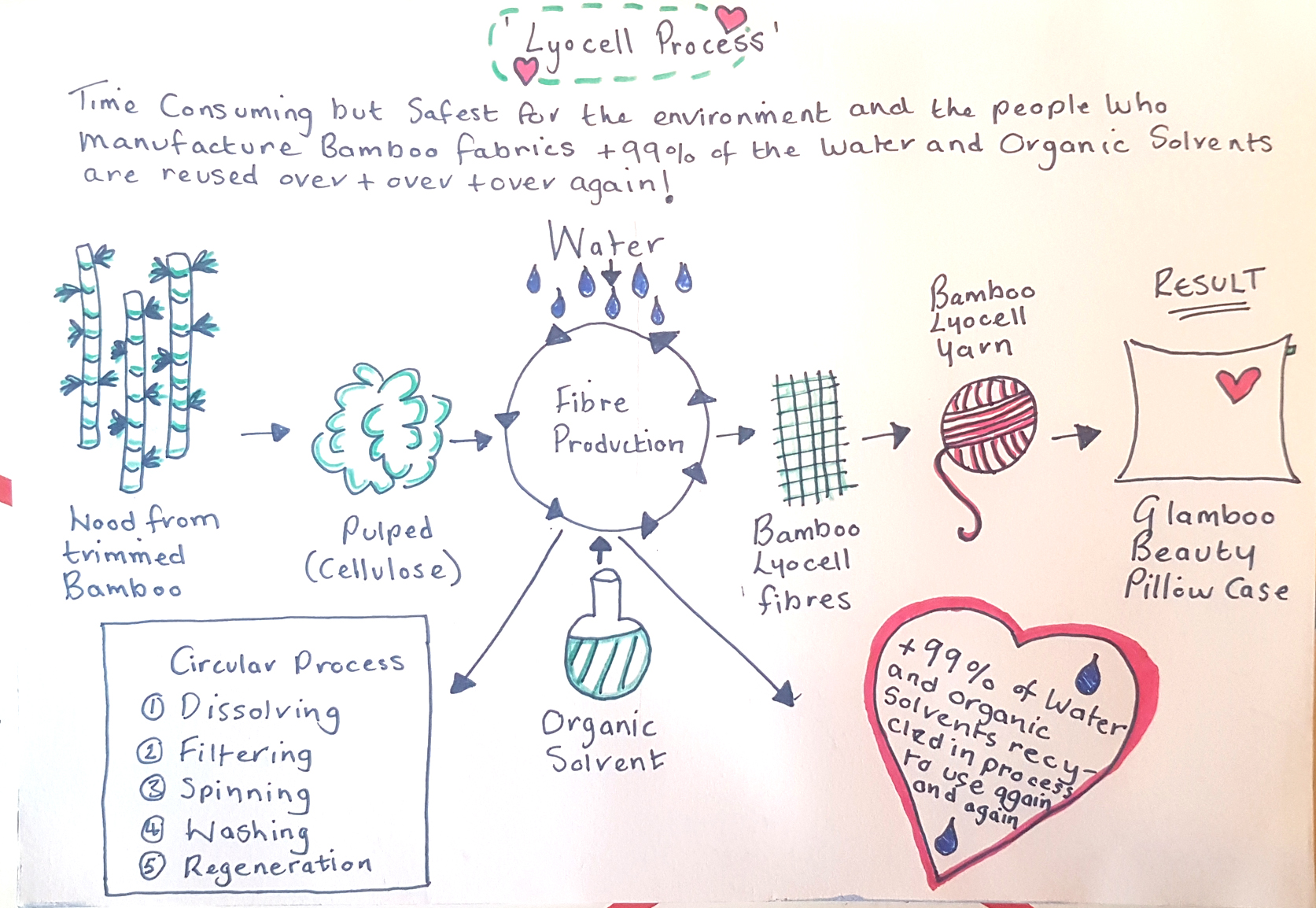About Glamboo
Why Bamboo? Because we love you!
Bamboo, there are over 1500 different varieties of this grass (Moso Bamboo is usually used for fabrics) and it grows up to 36 inches in a day. In order to process the Bamboo you cut the stem whilst the extensive root systems remains in situ - it is growing again immediately, reaching full height in 8-10 weeks. It does not cause soil erosion when harvested, requires zero pesticides (due to Bamboos own antifungal agent - Bamboo kun) and requires no watering as it often lives in challenging environments and needs only rainwater to thrive. When processed we belive that Bamboo Lyocell is the softest, smoothest fabric in which to produce a pillowcase.
Unfortunately all Bamboo fabric is not created equal.
The main differences between Bamboo Lyocell and Bamboo Rayon/Viscose happen in the processing of the fibre to fabric.
Bamboo Lyocell is produced by pulping the Bamboo stem mechanically using a very mild, non toxic organic solvent (Amine Oxide) to break down the fibres in a circular or closed loop process, which recaptures and re-uses 99% of the water and organic solvents involved in the processing (these can then be used over and over again).
Bamboo Rayon or Viscose are chemically processed using very harsh chemicals, which are detrimental both for the environment and for the people involved in manufacturing the fabric. Some off the chemicals used in the processing such as Carbon Disulfide (toxic) have been linked to severe illness amongst workers producing the Rayon/Viscose and at least 50% is not re-used but ends up in water systems, damaging both the water life and the local people involved in it's production. It is much cheaper to purchase but it comes with a very high cost to some, including the environment.

Interesting
- Bamboo grass is 2 x as water efficient as trees.
- 5,000 gallons of water are used to produce 2 and a bit lbs if cotton (on irrigated land) this causes a lot of 'run off' where waste water leaches into water sources alongside chemicals.
- 130 gallons of water are used to produce 3 lbs of Bamboo (no irrigation only rainwater required)
- Bamboo requires no pesticides due to Bamboo Kun, a natural antifungal agent within the grass, whereas the cotton industry uses 11% of pesticides globally.
- 24% of the world's insecticide is used in the production of cotton.
- Bamboo will always re-grow so their extensive root structure remains in place protecting against soil erosion.
If you compared yearly product amount of an acre of Bamboo compared to Young Forest, Bamboo would produce 150 tonnes compared to 25 tonnes of Young Forest, Bamboo would generate 35% more oxygen and absorbs 150 tonnes of CO2 per year compared to the 45 tonnes absorbed by an acre of Young Forest - pretty amazing we think, very healing towards the planet and super sustainable.

